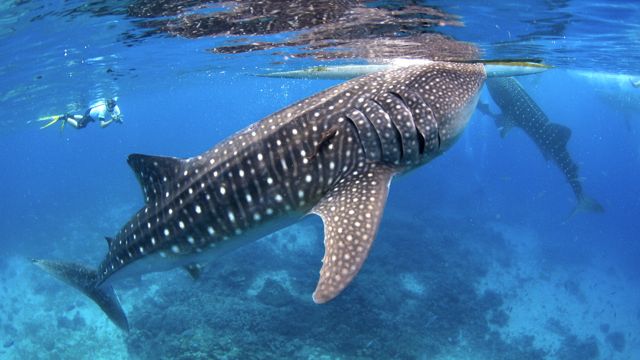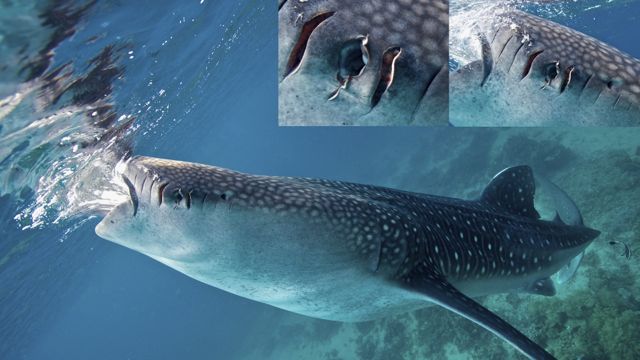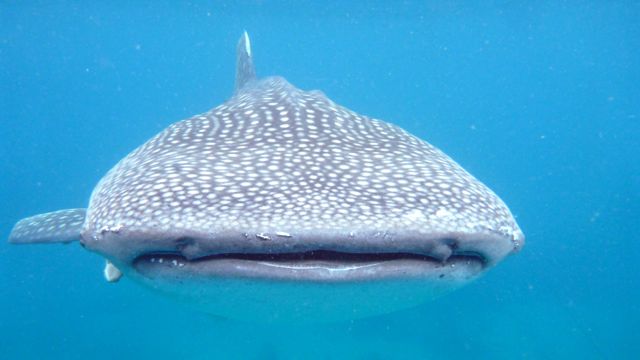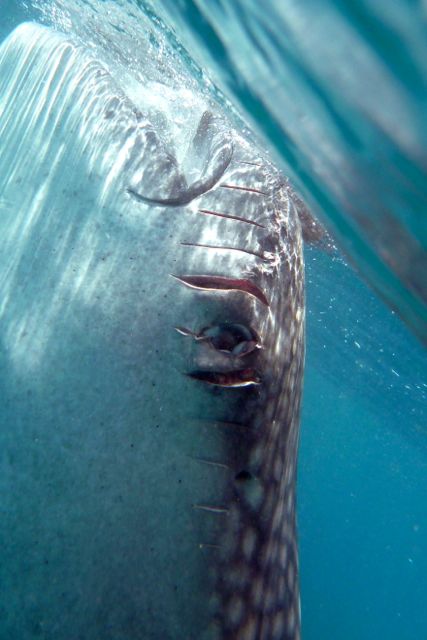SUMMARY
This is AI generated summarization, which may have errors. For context, always refer to the full article.

MANILA, Philippines – The days allowing whale sharks to be hand-fed in Oslob, Cebu, may be numbered.
On August 28, the Protected Areas and Wildlife Bureau (PAWB) issued a memorandum to its regional office to collaborate with the local government of Oslob to stop the feeding of whale sharks. According to PAWB Director Mundita Lim, the practice of whale shark feeding is against established protocols on whale shark watching.
Lim’s order was a response to the letter of whale shark researcher Elson Aca who wrote an appeal to national government agencies to stop the feeding of whale sharks in Oslob.
The Bureau of Fisheries and Aquatic Resources (BFAR) responded favorably as well. BFAR Director Asis Perez informed Aca that the Fisheries Administrative Order on whale sharks protection (FAO 193) is being amended to include feeding as a prohibited act.
Hand-feeding whale sharks in Oslob

Since late 2011, the coastal community in Oslob has been intentionally feeding whale sharks so that tourists can interact with them.
As the hype escalated, so did the concern of scientists and environmental advocates. Save Philippine Seas (SPS) — an independent movement to protect the country’s marine resources — attended meetings and offered research-based guidelines that discouraged feeding of the whale sharks.
We explained that by keeping the sharks in one area for prolonged periods of time, they are unable to perform their biological functions in the ecosystem. They can’t rid themselves of parasites, they cannot feed and they cannot mate.
We also added that by feeding them frozen shrimps, the whale sharks are not getting their full range of nutritional requirements. This delays growth and time of maturity, consequently delaying reproduction of the species.
As a species vulnerable to extinction, the whale sharks need all the reproductive opportunities they can get.
Those recommendations fell on deaf ears, and the practice continued.
Oddly, both Oslob Mayor Ronald Guaren and Tan-awan Oslob Sea Warden and Fishermen’s Association president Lembet Susada said in an interview dated August 30 that fishermen weren’t feeding the whale sharks per se, but only “luring” and “teasing” them to come out for interaction.
Their statements go against Section 10.9 of the local ordinance they passed, prescribing whale shark interaction guidelines that declare: “No feeding of whale sharks shall be allowed except those who are authorized under this Ordinance.”
The ordinance makes no mention of who are authorized, but it does state that feeding is allowed.
The lesser of two evils?

It has been argued that feeding the whale sharks in Oslob prevents the animals from being killed. “Buti pa nga sa Oslob, pinapakain. Sa ibang lugar, pinapatay,” critics remark.
While feeding is admittedly a better option than slaughtering, this practice is not protecting them. It is, in fact, doing the complete opposite.
Colleagues from SPS headed to Oslob during the 4-day weekend in August to evaluate the situation.
SPS teammate Nix Nicolas observed that the whale sharks appeared desensitized to human presence in the water.
“There were times when the sharks got close to us, but we were not chided by the boatmen to maintain the recommended distance,” she shares. “We saw a shark or two nudge a boat, asking for food.”
The whale sharks’ positive association with boats in Oslob can cause negative impacts when they migrate to areas where there are no interaction guidelines.
Fermin, a “resident” whale shark went missing for a couple of days in July and returned with propeller scars on its head and visible damage on the left eye. Given the location of Fermin’s injuries, he most likely mistook the bubbles of a boat for food, or as an indication that he would be fed.
Being comfortable around boats can also put whale sharks at a higher risk of being poached.
Even if whale shark fishery has been banned in the country since 1998, there are still reports of whale sharks being slaughtered in Bohol, Antique and Bicol.
This may not be done is Oslob, but poachers in other areas will have an easier time catching the whale sharks because they are already at ease with humans.
The issue of livelihood

Another major concern regarding the banning of feeding is the livelihood of the fishermen.
Data shows that Oslob has already earned over US$500,000 in the first 6 months of 2012.
We don’t need to look for far for lucrative whale shark watching industries that don’t allow feeding.
In 2005, whale shark interaction in Donsol, Bicol, created more than 300 jobs and contributed more than US$620,000 to the Filipino economy. From 867 tourists in 2002, the number ballooned to 7,000 in 2005.
The feeding of wildlife is strictly prohibited in well-managed and protected areas. Tourism built around the natural environment is not an easy business.
Lawmakers have to be extra careful in making sound policies that are based on how the ecosystem works.
This will not only ensure the sustainability of the resources but also of the industry. – Rappler.com
Add a comment
How does this make you feel?
There are no comments yet. Add your comment to start the conversation.